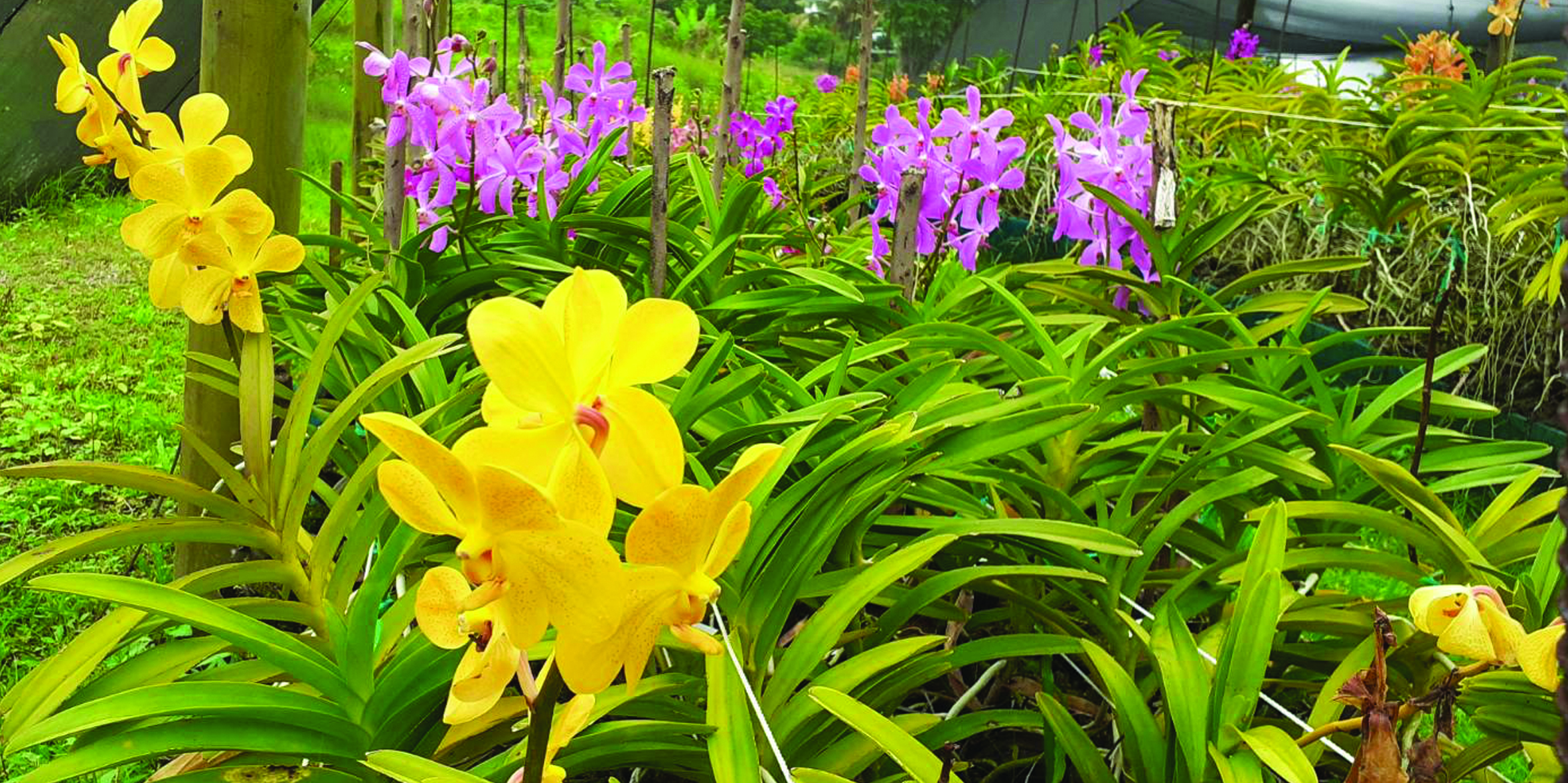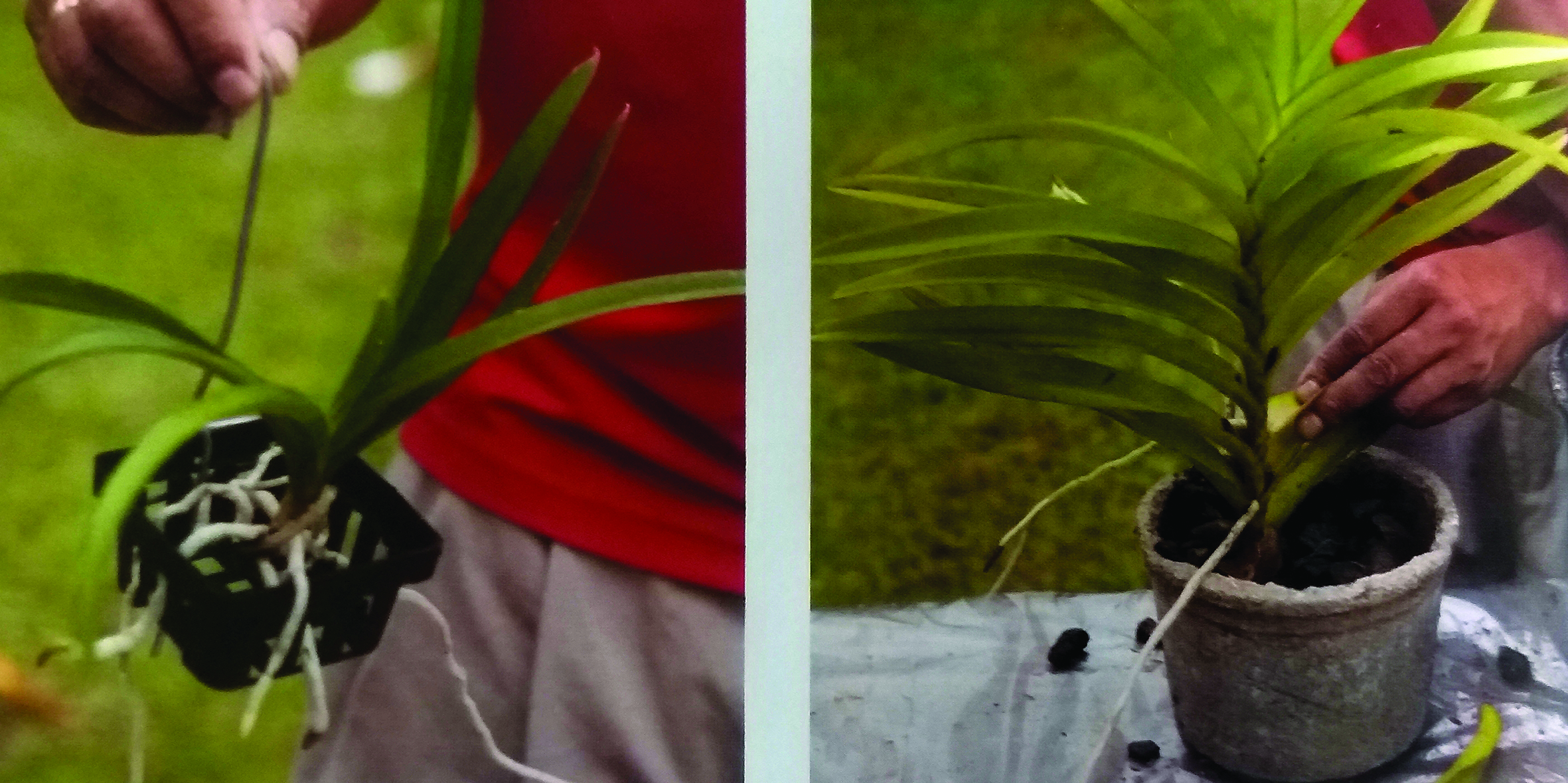b l o g
m a r c h 2 0 2 1
 Semi and quarter terete vanda orchids will thrive from 50% shade to full sun
Semi and quarter terete vanda orchids will thrive from 50% shade to full sun
With Stephen Henry, Manager of South Sea Orchids
Growing Conditions
The majority of orchids that fall in this category originated in the monsoon regions of tropical Asia. Therefore, they require the warm moist conditions found in the Central and Eastern parts of Fiji’s largest island, Viti Levu. These orchids require full sun and good aeration on their roots. It is recommended that vandas be the potted orchid of choice in the wet regions of Fiji.
Vanda orchids vary in terms of the amount of sunlight that they like. The leaves of the vanda orchids are the best indication of the amount of sunlight your plant should receive. Generally the broader the leaves, the more shade they need. Most of the commercial varieties that are grown at South Sea Orchids are either semi and quarter teretes – which means that they will thrive from 50% shade to full sun. At South Sea Orchids, the 50% shade is provided by black sarlon cloth.
Required potting mix
Vanda orchids are true epiphytes and therefore do not require any potting mix provided the plants are well watered during the rainy season. Most vanda orchids will be very happy as hanging plants with no media at all. A small pot can be beneficial to help hang the plant. Vanda orchids can also be grown on benches and in this case they should be potted using ‘blue metal’ (basaltic gravel).

(L) Vanda orchids are true epiphytes and therefore do not require any potting mix – they prefer to have their roots hanging in the air (R) Vanda orchids can be potted on benches using ‘blue metal’ (basaltic gravel)
Looking after your plants
Feeding your plants
The feeding requirements for vanda orchids are very similar to the requirements of dendrobium orchids. For commercial production of vanda orchids at South Sea Orchids, foliar fertilizer is applied twice a week alternating between a high N fertilizer and a high K fertilizer.
Watering requirements
Without rain, vanda orchids should be watered every 2 days.
Repotting and dividing
The main method for multiplying your vanda orchids is by cutting a tall mature plant and waiting for the base to send a new shoot.

(L) Select a mature plant with lots of healthy aerial roots (R) Cut the top of the plant ensuring that both the top and bottom plants have at least three healthy aerial roots

(L) The top plant should be loosely planted in ‘blue metal’ basaltic gravel (R) The top plant can also be placed in a pot and hung from a wire
Checking your plants
You should check your vanda orchids regularly for signs of insect damage and disease. You should also be observing your plants to ensure that they are growing vigorously – thick green growing tips are an indication that your plant is healthy and well fed.

Thick green growing tips are an indication that your plant is healthy and well fed
Dealing with pests and diseases
You could have problems with thrips or mites in your vanda orchids which will damage the leaves and stems of your plants. To control these bugs you must use a systemic insecticide. Always follow the instructions on the bottle when using these chemicals.
Scales can also be a problem on your orchids and will damage the leaves and stems of your plants. To control these bugs, you can use soapy water applied all over the plants to suffocate the bugs. There are also chemicals such as white oil or conqueror that can be purchased and used to control scales.
